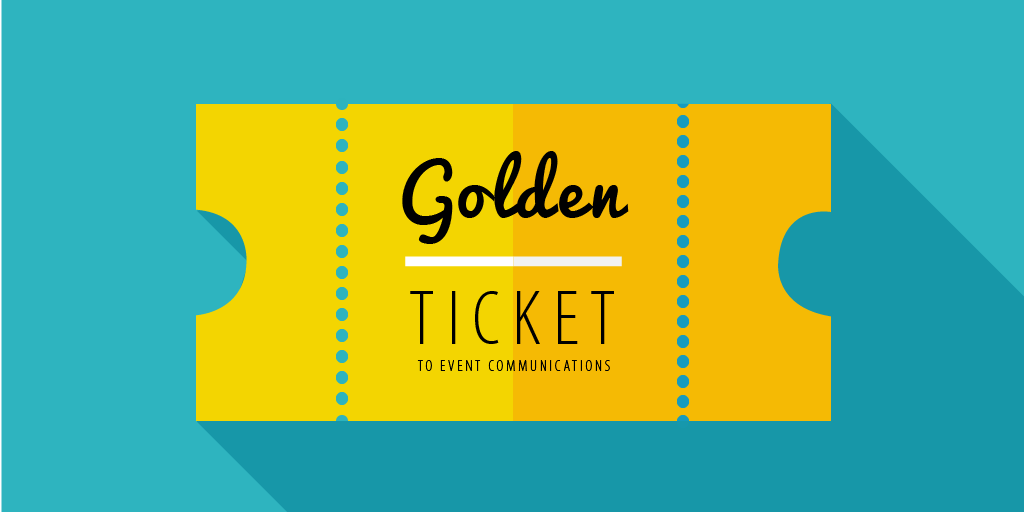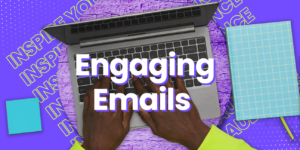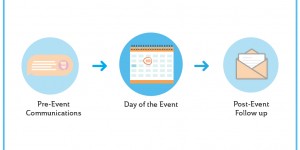For many organizations, hosting a special event is a regular fundraising activity and like any fundraising initiative, it’s important to have a plan before diving in and promoting the heck out of it. Would you do that for an end of year appeal campaign? Didn’t think so.
There is so much that goes into planning and executing a successful fundraiser, and many organizations typically have bigger goals aside from selling tickets. Special events are lots of work, but they’re a great way to recognize major donors, build and expand audiences, raise money, and have some fun celebrating your organization’s success. But aside from organizing committees and planning activities that’ll generate revenue on the night-of, the biggest and oftentimes most daunting task is planning and executing communications and marketing around the event. Because special events are one of the few times during the year that your entire staff and board are communicating together, a solid plan will never be more crucial to keeping things on track and on message.
We’ll be spending the month of February discussing all things event communications, starting with crafting a proactive plan.
Step 1: Make a Timeline
Life will be a whole lot easier if you have a timeline. Working backwards at least three months from your event date, map out communications and start building a schedule.
Know your deadlines.
It’s hard to know where to start, so begin by knowing when important deadlines are. Start by answering the following questions. What’s your firm RSVP deadline? When do you need artwork and ads submitted for the sponsorship journal? This will give you a sense of when your invitation should arrive, how much time you’ll need to push ticket and ad sales, and when you’ll need to have your artwork finalized.
Figure out print turnaround time and mail-drop dates.
Your print and mail vendor is your friend, and their knowledgeable staff will help you figure out what postage you’ll need and how quickly you can get your printed materials produced and distributed. Remember, you’re not their only customer so talk to them in advance so you and your designers have enough time to prepare. Ask about postage rates and mailing options, too. Different mail classes take different amounts of time.
Identify any potential communication milestones.
Look at your timeline and see where pertinent information that generates buzz can be communicated. This can include honoree information, special performances, and the announcement of underwriting sponsors as well as “last chance” messages like RSVP and ad journal deadlines or early bird rates if you offer them.
Step 2: Be Clear About Your End Action Goals
Obviously your organization’s biggest goal is raising a specific amount of money. However, it’s important that you know what you want to accomplish with each touch throughout your marketing campaign. Every piece of printed or digital collateral should have a desired end-action.
Have a clear objective.
When you determine what you want to happen as a result of a specific marketing effort, you can then simplify your call to action. Do you want to sell tickets, tables or ads? Are you soliciting sponsorship? Are you garnering support for a particular person or cause? Do you want others to share their stories? It’s important not to overload every email or letter with multiple calls to action, as that creates confusion for the recipient. Be bold about what you want, and be clear about how they can follow through. Too many links or buttons will increase the likelihood of your recipient bouncing off the page or ignoring future emails.
Always personalize.
One other notable thing to mention is to direct your solicitation (whatever it may be) to the most appropriate audience. For example: if you’ve got a young professionals ticket option or low cost ads, direct emails about those options to that particular audience. You could apply a similar rule to major donors or high level sponsors. Always provide a subtle pathway to other options, but focus most on what your goal is. Personalizing communications with the most relevant content for your audience is the first step to increasing overall engagement. If you’re just getting started with list segmentation, look at past gift history as a jumping off point.
Step 3: Pick Your Materials and Channels
There are a lot of ways you can communicate about your event, so make a detailed list from the start that outlines everything you’re going to need. Here are several common materials:
- Save the Date notice
- Full invitation
- Electronic invitation
- Press releases or kits
- Sponsorship/commemorative journal
- Signage (way-finding, sponsorship, welcome)
- Letters from your Board
- Letters from your Executive Director
- Letters from your Event Chair(s)/Honoree(s)
- Emails and graphics
- Event website or landing page
- Ticket/ad journal check out page
- Social media posts and graphics
- Videos
- Slideshow presentations
- Gift bags or materials
- Step and repeat
- Banners
Make sure that the graphic design of every piece of collateral, printed and digital, is cohesive and unified. Create a framework for all copy and make sure that each piece works to tell your dedicated story. As we said before, everyone in your organization (including trustees) will be sending out communications. While things should feel personal, it’s important that information is consistent and correct. Provide your designer with your full list of materials from the beginning so that you’re not trying to pull something together that “looks similar to the invitation” at the last minute. Know what pictures you’ll want to use, provide captions if necessary, and stay organized. Free tools like Dropbox or Google Drive are great for creating a centralized location for your staff, board, and committees to access e-vites, press releases, documents and forms, or any other pertinent materials on the fly.
Identify your action channels and support channels. From the get-go, know which channels will be your primary tool for communicating. Direct mail, email, phonathons and websites are excellent options for the bulk of your event communications. Social media and email notifications are perfect networks to support your main methods for communicating with your audience. Pick dedicated days of the week around primary communications like emails or mail drops to send Tweets or make Facebook updates, this way you’re not grasping at straws trying to figure out what to say and when to say it. Having this sort of system in place keeps things manageable, especially when everyone is on the go closer to the big day.
The Wrap Up
Staying organized and remaining proactive are the first steps to successful event communications. Once things get rolling, it can be hard to stay on track. Having something manageable to refer back to that is shared among your team will be a big help when things feel out of control. Be purposeful with each touch and personal wherever you can. Suppress those who have bought tickets or made donations from any messaging that solicits a gift, and always be prompt with thank you’s.
Like what you see? Stay in touch!
You Might Also Enjoy:
+ Actionable Analytics: The Next Frontier
+ File Prep Advice to Save Time and Avoid Mistakes During Event Season
+ 4 Keys to Meaningful Donor Stewardship
+ Ways to Play Around with Personalized Print
+ 4 Practical Ways Non-Profits Can Use Social Media












